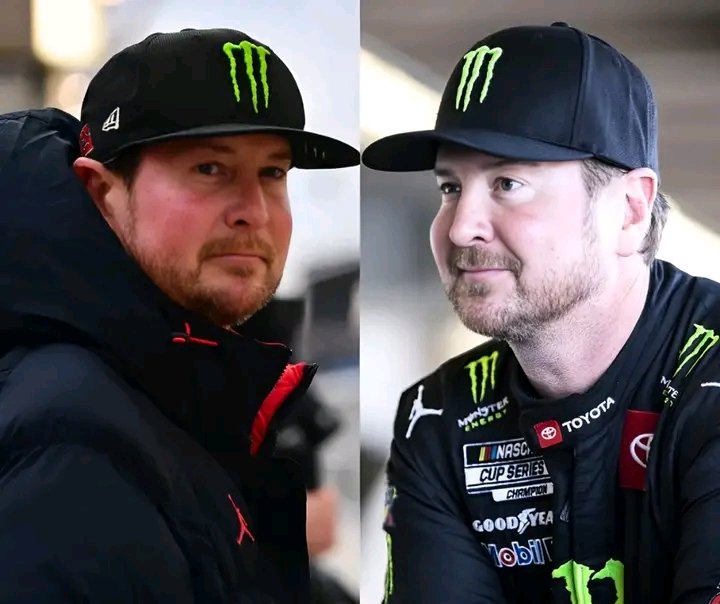Kurt Busch isn’t buying the tech hype—he wants NASCAR to feel like NASCAR again
When Kurt Busch speaks, it’s not just another former champ reminiscing—it’s a reality check for a sport trying to find itself in the age of streaming and algorithms. As NASCAR leans into its flashy partnership with Prime Video, rolling out double-box screens, AI-fueled analytics, and the game-changing Burn Bar, Busch is over here waving a caution flag, reminding everyone what made fans fall in love with racing in the first place.
He’s not anti-progress, but he’s not pretending that digital bells and whistles can replicate the spine-rattling roar of engines at Talladega or the beer-soaked chaos of a night at Pocono either. His plea is simple: don’t let the sport’s soul get lost in the pixels. For him, the track isn’t just part of the show—it *is* the show.
In recent years, NASCAR has embarked on a digital transformation, eager to tap into the streaming era’s vast audiences. The partnership with Prime Video exemplifies this shift: fans can now enjoy high-tech features like split screens that show multiple camera angles simultaneously, real-time AI-driven analytics that provide instant data on car performance, and the Burn Bar—a digital hub that offers behind-the-scenes content and driver insights. These innovations are designed to modernize the sport, attract younger viewers, and keep pace with other entertainment options vying for fans’ attention.
Jeff Gordon, another legendary driver turned NASCAR ambassador, has enthusiastically embraced this tech-forward vision, seeing it as a way to deepen fan engagement and add layers of depth to the racing experience. The idea is to make fans feel closer to the action, to give them tools to understand the nuances of racing that once only insiders appreciated. But Busch, a veteran driver with decades of on-track experience and a deep love for the raw, visceral aspect of racing, remains skeptical. He worries that in the pursuit of digital innovation, NASCAR risks losing its core identity—the thrill of feeling the engine’s power, the smell of burning rubber, the thunderous applause echoing through the grandstands.
His perspective is rooted in a simple truth: the essence of NASCAR isn’t just about data or flashy graphics. It’s about emotion, atmosphere, and human connection. A kid at a race for the first time, standing near the fence, feeling the ground shake as cars zoom past at 200 miles per hour—that’s the kind of memory that sticks. No amount of AI analytics or multi-screen setups can replicate that physical, primal experience. Busch argues that no matter how advanced the technology gets, it can’t substitute for the visceral feeling of being in the midst of a roaring crowd, smelling the fuel and rubber, and experiencing the chaos firsthand.
While digital features like the Burn Bar offer fans behind-the-scenes glimpses—such as driver interviews, pit crew insights, and exclusive footage—Busch believes that such content should complement, not replace, the traditional race-day experience. The danger is that by focusing too much on digital engagement, NASCAR could inadvertently prioritize virtual connectivity over real-world passion. Fans might watch a race from their couch, immersed in screens and stats, but miss out on the communal joy of being at the track, sharing the highs and lows of a race in real time.
As streaming numbers climb and the sport grapples with declining attendance, the question arises: what will keep fans coming back? Busch’s answer is straightforward: authenticity. The thrill of the race, the unpredictability of a late pass, the camaraderie among fans—these are things that can’t be digitized. He urges NASCAR to preserve the elements that make the sport special, to remember that at its heart, racing is about human skill, courage, and raw emotion.
In a world increasingly driven by data and digital experiences, Busch’s message is a reminder: don’t lose sight of the human element. The sport’s soul isn’t in the pixels or analytics; it’s in the sound of engines revving, the sight of cars sliding through turns, and the shared experience of thousands of fans feeling the same rush. For Kurt Busch, the future of NASCAR isn’t just about embracing technology—it’s about ensuring that the sport remains true to its roots, that it continues to inspire awe and passion in the hearts of those who walk through the gates.
In the end, NASCAR’s challenge is balancing innovation with tradition. It’s about integrating new tools to enhance the experience without overshadowing the raw, unfiltered magic of racing. Busch’s plea is a rallying cry to remember what made NASCAR great in the first place: the feeling of being part of something bigger, something visceral, something human. Because, at the end of the day, no digital feature can replace the thrill of being at the track, feeling the engines’ roar, and sharing that moment with thousands of fellow fans. That’s the true heartbeat of NASCAR—and Busch hopes it always will be.




